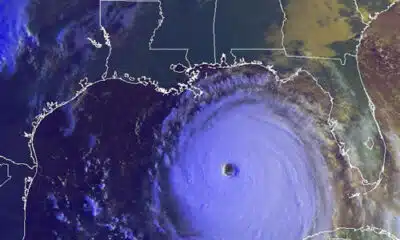News from the South - Texas News Feed
Responders from Mexico help with Texas flood response
SUMMARY: Responders from Mexico are assisting Texas in flood recovery along the Guadalupe River. A team of about 45 rescuers from Nuevo Leon, equipped with boats, ATVs, drones, and search dogs, volunteered to aid Kerr County after catastrophic floods. Eric Cavazos, director of Mexico’s Civil and Emergency Response Agency, emphasizes that their help is driven by humanity, not politics. The team’s search and rescue work has been vital, marking key locations and locating missing persons. Despite the emotional challenges, including finding personal items like a teddy bear, the Mexican responders are committed to continuing the mission until all those missing are found.
Dallas-Fort Worth news and weather from the FOX 4 weekend team.
Subscribe to FOX 4: https://www.youtube.com/fox4news?sub_confirmation=1
Dallas news, weather, sports and traffic from KDFW FOX 4, serving Dallas-Fort Worth, North Texas and the state of Texas.
Download the FOX LOCAL app: fox4news.com/foxlocal
Watch FOX 4 Live: https://www.fox4news.com/live
Download the FOX 4 News App: https://www.fox4news.com/apps
Download the FOX 4 WAPP: https://www.fox4news.com/apps
Follow FOX 4 on Facebook: https://www.facebook.com/Fox4DFW/
Follow FOX 4 on Twitter: https://twitter.com/FOX4
Follow FOX 4 on Instagram: https://www.instagram.com/fox4news/
Subscribe to the FOX 4 newsletter: https://www.fox4news.com/newsletters
News from the South - Texas News Feed
Rizzbot secrets revealed: Who is the mechanical man stalking Austin?
SUMMARY: Rizzbot is a three-foot-tall humanoid robot, wearing a cowboy hat, gaining popularity in Austin with nearly 500K TikTok followers and over 20 million likes. Built on a Unitree G1 platform costing about $15K-$50K with upgrades, Rizzbot weighs 77 lbs and performs dances taught at the University of Texas through motion capture technology. Operated remotely by an anonymous former YouTuber and biochemist, Rizzbot entertains crowds with preprogrammed moves, embodying charisma (“rizz”). UT Austin researchers developed its fluid motions and safety features. Seen around Austin and other cities, Rizzbot challenges stereotypes, making robots approachable and fun.
The post Rizzbot secrets revealed: Who is the mechanical man stalking Austin? appeared first on www.kxan.com
News from the South - Texas News Feed
Concerns erupt in town hall meeting over potential Leander ISD school closures
SUMMARY: Leander ISD in Texas is considering closing three elementary schools—Steiner Ranch, Laura Welch Bush, and River Ridge—due to under-enrollment and budget deficits caused by state underfunding. The district proposes three options: consolidating campuses (saving $4.15 million), updating staffing guidelines ($1.78 million savings), or hybrid utilization ($3.55 million savings). Each school operates below 60% capacity but holds an A rating from the Texas Education Agency. Parents and a board member oppose closures, citing community impact, teacher-student ratios, and future population growth. Superintendent Bruce Gearing acknowledges concerns but stresses financial necessity. A final decision is expected October 9.
Read the full article
The post Concerns erupt in town hall meeting over potential Leander ISD school closures appeared first on www.kxan.com
News from the South - Texas News Feed
Neighbors contacted KHOU 11 about trash piling up in their yards. Then this happened…
SUMMARY: Neighbors in the Tidwell Timbers neighborhood credited KHOU 11’s coverage for prompting city crews to clean up heavy trash piles that had been sitting for months. After complaints aired, Houston’s solid waste trucks rolled through, removing all bulk waste, much to residents’ satisfaction. The Civic Club president shared a video showing the cleanup progress. Houston Solid Waste noted heavy trash pickup is two weeks behind schedule, advising residents to follow their neighborhood’s pickup calendar to prevent future buildup. Jason Miles reported from northeast Houston for KHOU 11. Residents with community concerns are encouraged to submit news tips to KHOU.com.
Solid waste trucks rolled through on Wednesday after residents contacted KHOU 11 about piles of trash in their community.
-
News from the South - Texas News Feed5 days ago
Racism Wrapped in Rural Warmth
-
News from the South - Missouri News Feed6 days ago
Donors to private school voucher program removed from Missouri transparency site
-
News from the South - Alabama News Feed6 days ago
Child in north Alabama has measles, says Alabama Department of Public Health
-
News from the South - Texas News Feed6 days ago
Texas Democrats’ walkout prompts GOP retribution
-
Local News7 days ago
MSU unveils mixed-use development featuring boutique hotel, cultural landmark
-
Our Mississippi Home6 days ago
After the Winds: Kindness in Katrina’s Wake
-
News from the South - Missouri News Feed6 days ago
New Missouri law means state is no longer allowed to seize assets of prison inmates
-
News from the South - Tennessee News Feed6 days ago
A marsh bird found in Tennessee wetlands is endangered. FWS is drafting a plan.












































